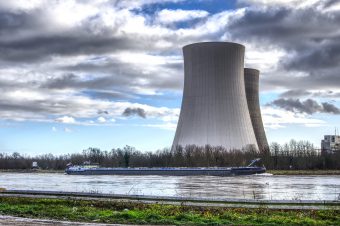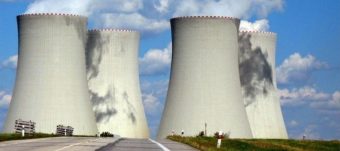
In the realm of energy production, few topics evoke as much debate as nuclear power. Its ability to generate vast amounts of clean electricity is counterbalanced by concerns over safety and nuclear waste.
And that debate is far from over. As some countries embark on multi-year commitments to include nuclear energy as part of their overall energy mix, others are reducing or closing down plants altogether.
But the global energy transition is a vital step in human history, and nuclear power holds the potential to offer almost inexhaustible sources of clean and sustainable energy.
Here, Maciej Kolaczkowski, Manager of the Advanced Energy Solutions Industry at the World Economic Forum, explains the state of nuclear power around the world.
More:
- WITH RATIONAL CONSUMPTION OF ENERGY TO A SAFE SUPPLY
- CO2 EMISSIONS FROM EU TERRITORIAL ENERGY USE: -2.8 PERCENT
- ENERGY TODAY AND HOW TO CREATE A BETTER TOMORROW
Nuclear power capacity is growing
Nuclear energy made up around 10 percent of global electricity generation in 2020, according to the International Energy Agency (IEA). It was the second-largest source of low-emissions electricity overall and generated more electricity than all the wind and solar PV generation put together.
But nuclear capacity growth has not been straightforward, explains Kolaczkowski.
“Capacity additions peaked in the 1980s at 230GW, driven mainly by new plants in Europe and North America. But new construction slowed sharply to just 25GW in the 1990s, in the wake of the major nuclear accidents at Three Mile Island in 1979 and Chernobyl in 1986.
“The 2000s saw around 46GW of capacity additions, while the 2010s had 56GW. But growth is now accelerating, and 2021 had 10 construction starts, instead of the more typical four or five.”
As of May 2023, around 440 nuclear reactors were operating in 33 countries with a capacity of 390GWe, according to the World Nuclear Association, while a further 60 power reactors are being constructed in 15 countries including China, India and Russia.
Even with all the capacity growth, nuclear energy’s contribution to global power generation is expected to be about 8.5 percent in 2050, slightly under today’s levels as other clean energy sources also grow.
Safety challenges and perceptions are slowing capacity growth

Nuclear energy projects are on the rise again. Still, growth is stalling in advanced countries – the result of high costs of new projects, long construction times, unfavourable market and policy conditions and, in some countries, a lack of public confidence in nuclear power itself.
Overall, nuclear energy remains the safest energy source, along with wind and solar. But perception is vastly different from reality, and this perception could be slowing capacity growth in some countries that are reducing their reliance on nuclear power, says Kolaczkowski.
“The public perception of nuclear energy tends to be shaped by dramatic events like Chernobyl in Ukraine. The disaster claimed 4,000 lives – including from radiation-induced diseases and 31 directly. But in the case of the Fukushima accident, there have been no deaths reported so far as an effect of the event directly or due to nuclear radiation.”
Another safety challenge with nuclear power plants is the fuel, which needs to be stored indefinitely, often in underground facilities, as it requires thousands of years to reduce its radioactivity. But Kolaczkowski sees an exciting development over the coming decade in Small Modular Reactors (SMRs), which use the waste fuel from existing plants, closing the fuel cycle.
They only have around a third of traditional nuclear power plant capacity, but cost less to build, in less time, and generate less harmful waste.
SMRs are designed to be safer and less exposed to dangers like natural disasters or meltdowns than traditional large-scale reactors, and can also be safely turned off and restarted, unlike conventional plants.
Ageing nuclear plants and differing worldviews on policy
In addition to the recent slowing of investment from advanced economies, Kolaczkowski also points to the number of nuclear power plants set to retire in the coming years as a challenge for nuclear development. Existing plants are closing either because they have reached the end of their operating licences, or because of policy-driven phase-outs or economic reasons. Still, some plants are having their lifespan extended.
Most nuclear plants have a 25-40 year lifespan, according to the World Nuclear Association, but after engineering assessments, the US Nuclear Regulatory Commission (NRC) granted over 85 renewals, adding around 20 years to the overall lifespan of plants.
Overall, more reactors will come online than close, and ultimately, it is up to individual countries to choose how to shape their energy futures, Kolaczkowski says.
“With policy support and tight cost controls, today’s energy crisis could lead to a revival for nuclear energy. But I am technology agnostic, and think that every country and company will make decisions in their own context. Overall, future energy systems will not be based on any one energy source or technology – a key conclusion of the Forum’s Fostering Effective Energy Transition report. We will see exponential growth of many advanced energy solutions like clean hydrogen and clean fuels, energy storage, demand management and solutions to manage our carbon footprint.
“The World Economic Forum helps by supporting systemic thinking about available solutions. So, it is not really about one or the other technology or energy source, but rather for different solutions to work together in a holistic way. How can we leverage advanced, modern solutions at scale while integrating them into the existing system?”
Source: World Economic Forum



